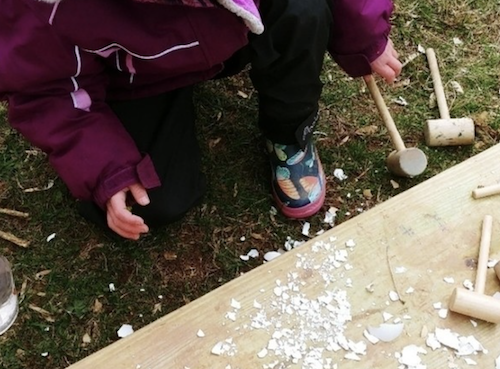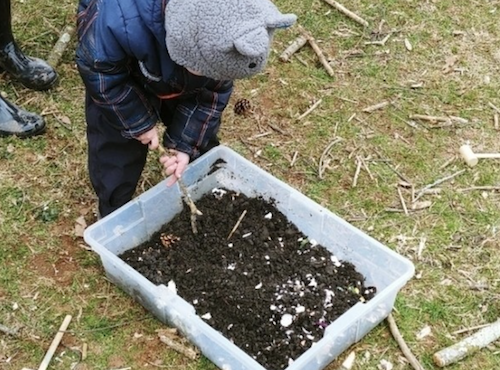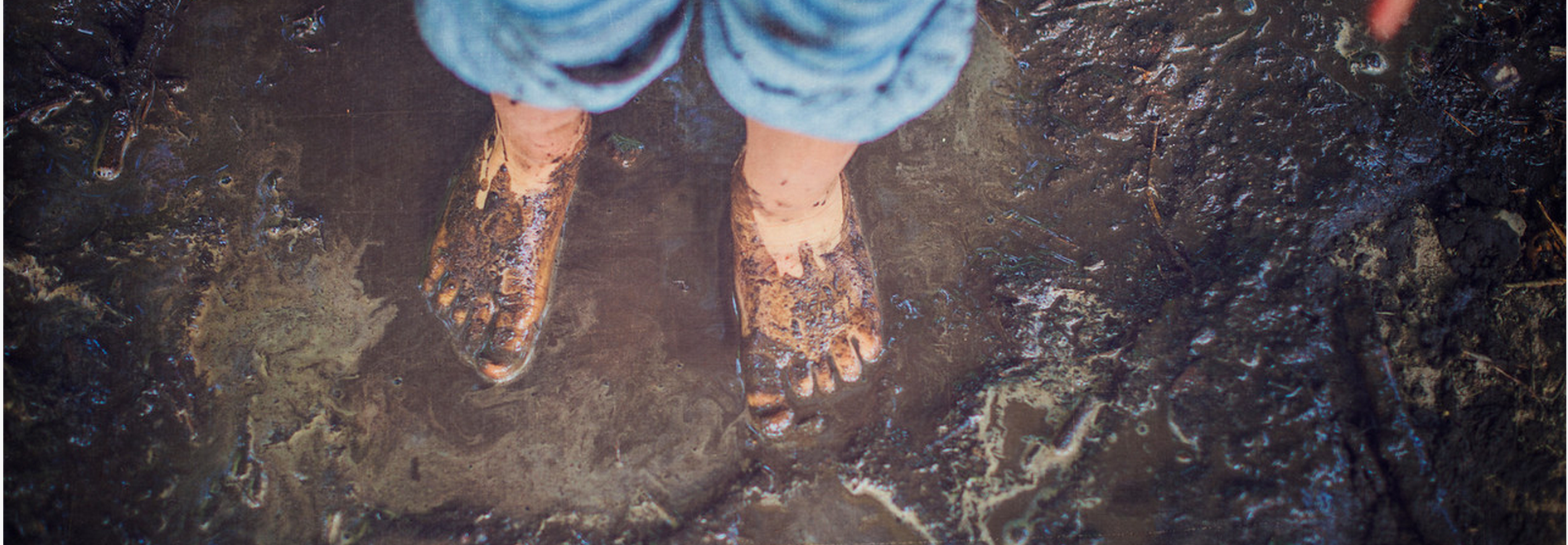Make Compost!
-
Age: 0 to 8+
-
Time: 1 hour+
-
Materials: food scraps, water, dirt
- Skills: Creativity, Naturalist, Sensory, Science
Most little kids don't yet have a sense of the life cycle of the food we eat and how plants decompose to support the growth of more plants. Even if you compost, it takes a while for that composting process to play out. One way to get kids right into the action is to engage them in adding food scraps right into soil. Plus, to many kids, the chance to break, mix and mash up scraps and soil is super satisfying stuff!
This activity is featured in our free April activity calendar. Don't have your copy yet? Get one at tinkergarten.com/calendar!
This activity is featured in our free April activity calendar. Don't have your copy yet? Get one at tinkergarten.com/calendar!
The Guide
Gather food scraps.
Gather food scraps that help enrich soil and are safe for your kids. Want ideas? See a list below.
Make compost.
Head outside and welcome kids to explore and break up the food scraps using their hands.
Kids can also use their hands, sticks or shovels to blend the bits of food scraps into dirt in your garden, a flower bed or any bin or open patch of dirt.
While they are working, if you are nearby, ask them some questions to attune their senses and get them thinking:
- How does the soil and food scraps mixture feel? smell? look?
- What happens when you add water?
- What do you think will be here when we check on this soil tomorrow? in a week? in a month?
Try these foods and have fun learning about what each one can do for the soil in your garden!
- Eggs—As long as no one is allergic to eggs, it's easy to wash and save the shells as you cook. Then, once you have a bunch, kids love to crush and incorporate them into dirt. Or, you can reuse the shells from Easter eggs, if you celebrate and used natural dyes. Either way, crushing eggs is super satisfying demolition work! And, the shells give the soil a nice boost of calcium, too.
- Coffee grounds—If you are like us, you live by your morning java. Keep some of the grounds and welcome kids to add them in. Once spent, coffee grounds can deter pests like slugs from sliming their way into munch on vegetables in your garden, and they can help boost the nitrogen levels in soil, too.
- Banana peels—Just like the bananas do for us, banana peels can contribute valuable potassium back into the soil. You can either steep the peels in water and make a banana tea to pour into the soil, or chop/cut up the peels, dry the bits and then sprinkle them into the soil.
- Citrus peels—Because citrus peels can last so well, they can actually make great starter pots for new seedlings. Or, bird feeders for feathered friends. If you have cats, a little citrus peels sprinkled about can keep the cats from treating the garden like a litterbox!
- Dried leaves—If you don't want to use kitchen scraps, you can always gather dried leaves, flower petals or grasses and welcome kids to break them apart and add them into the soil to speed up the natural process!
Why is this activity great for kids?
The chance to break apart and mix together scraps and soil stimulates many senses. We also know that destructive play actually contributes to the development of kids' creativity. Finally, a hands on experience with how foods break down and re-enter the soil gives kids a concrete way to understand the rather elegant cycle that underlies how we all survive!




